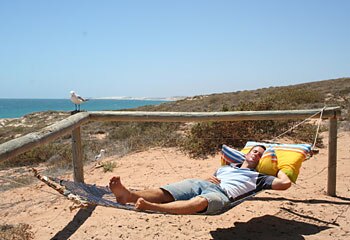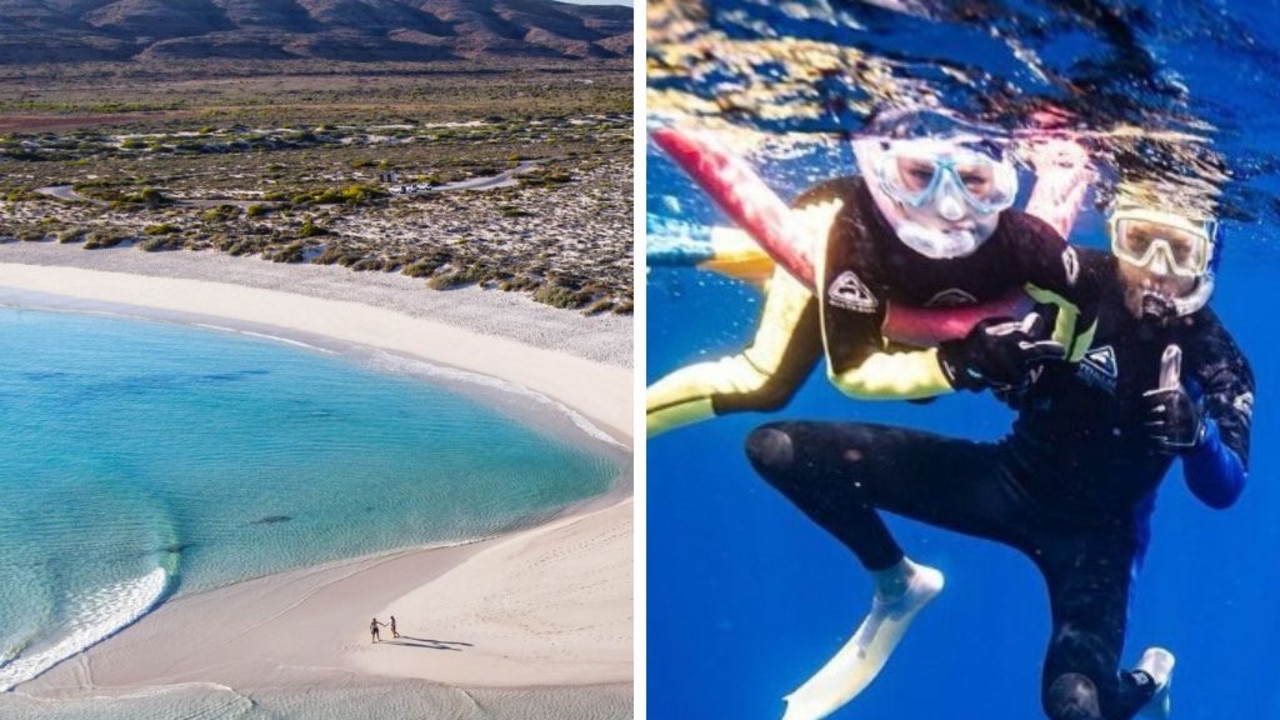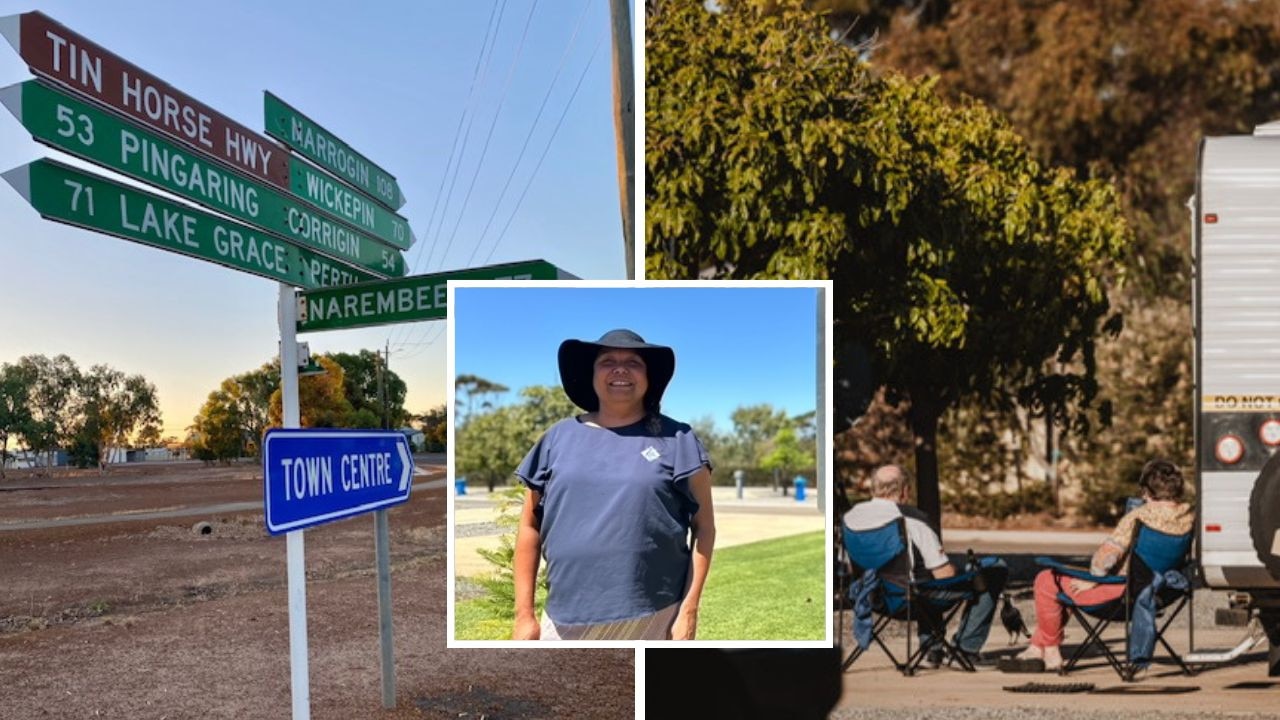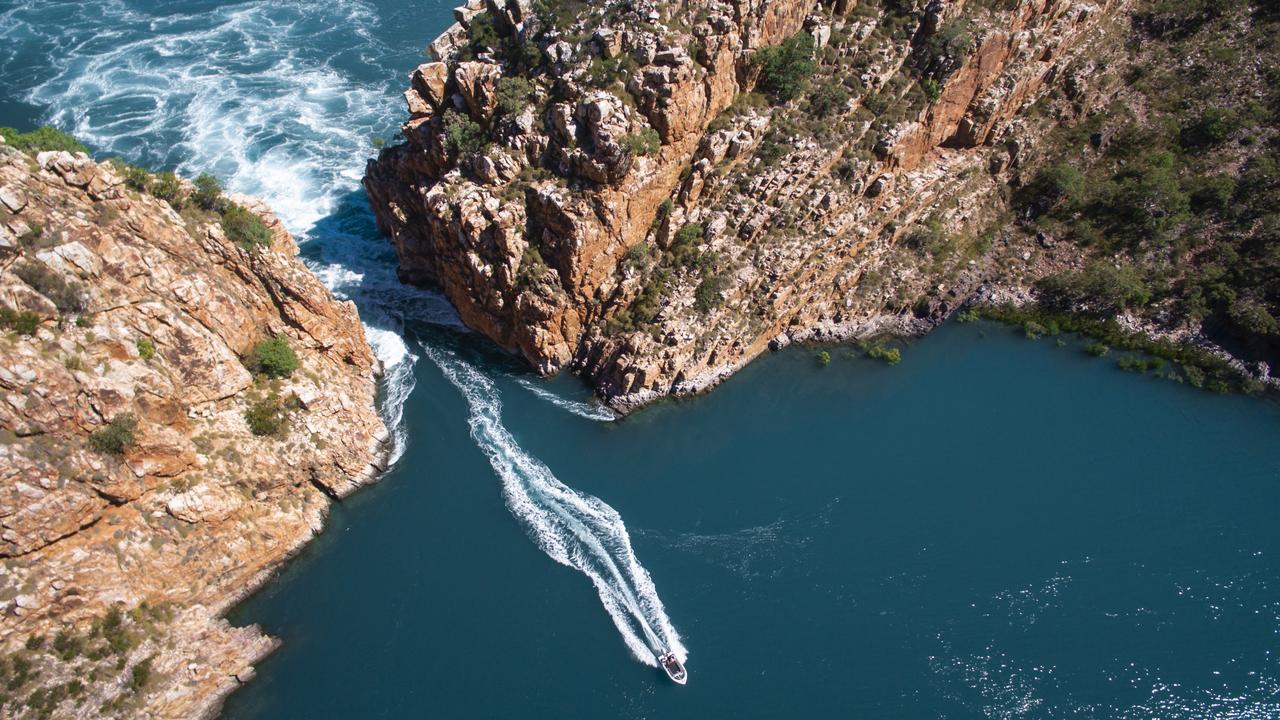Wander on the wild west side
STAYING on cattle stations is a great way to explore the West's rugged coast where red earth, white sand and turquoise water collide, as Emma Siossian discovers.

AS we drove into Red Bluff, on Quobba Station, a cheery sign met us. "Welcome to Red Bluff" it proclaimed in large, showy writing. "Nature at its rawest and most beautifully inspiring."
That sums up the appeal of staying on Western Australia's coastal working sheep and cattle stations: affordable access on stunning stretches of coast.
The stations are between Exmouth and Carnarvon, an area about 1000km north of Perth aptly referred to as the Outback Coast.
There's nothing delicate or subtle about the region's beauty. It's bold and dramatic, a striking collection of contrasts formed by the collision of red earth, white sand and turquoise water.
The ocean claws hungrily at the barren, rocky shorelines and wildlife often far outnumbers people.
Our first station stay came about halfway around what my husband, Adam, and I came to call our Big Lap of Australia.
We were keen to avoid the mainstream tourist path, so after visiting the towns of Exmouth and Coral Bay, we turned off the main highway and took a gravel road into Warroora Station.
There isn't much at Warroora, and it appealed to us for that reason. As we drove in, a row of stately bustards walked proudly through the arid scrub.
Around the next bend, two large red kangaroos bounded away, while a family of wild goats scurried from the other side of the road.
When we reached our beachside destination and parked our travel-weary 4m caravan at the far end of the station's 14 Mile Campground, there wasn't another person in sight.
Nor was there anything manufactured as far as the eye could see. We felt like two specks dwarfed by Mother Nature's grandeur.
"I love it here," said Adam on our first morning, as we ate breakfast on an empty bluff overlooking the ocean. I had to agree with him.
Being literally away from everything was energising and liberating. We found ourselves laughing as we stood gloriously naked outdoors under our solar shower to wash off the day's salt and sunscreen.
Warroora Station runs along 50km of Ningaloo Reef, a haven for marine life with more than 500 species of fish.
We enjoyed excellent snorkelling right off the beach, and from our caravan site we could see green turtles, manta rays and reef sharks swimming over the reef.
From Warroora, we returned to the main coastal highway and drove south to Carnarvon, which is where a dirt road accessing Quobba and Gnaraloo stations begins.
We stored our caravan at Carnarvon, as it wasn't really built for extended travel on unsealed roads, and packed our tent ready for the next part of our adventure.
Next morning, we arrived at Red Bluff, a section of Quobba Station about 135km north of Carnarvon.
Along with basic camping sites and well-equipped luxury safari tents, Red Bluff offers accommodation in palm-frond beach humpies.
When we walked into our beach humpy, we could hardly contain our delight. "Rustic" was one word that came to mind, along with "simple", "unique" and "perfect".
The humpy really did have walls made from palm fronds. They were attached to chicken wire, with an extra plastic covering stretched over the roof for waterproofing.
The shack had a concrete floor and was decked out with old furniture: a wooden table and chairs, bunk beds and one double bed.
Outside, with an uninterrupted view of the ocean, was a string hammock.
There were no facilities at the Red Bluff camping area (there were, however, pit toilets) so we were once again well stocked with food and water.
We also took our inflatable mattress, which proved much better than the old foam one in the shack.
Red Bluff itself is a dramatic headland that rises sharply from the ocean, creating a corner protected from the south-westerly winds that blow in spring and summer.
The point is well known among the surfing fraternity for its challenging reef break, referred to by surfer Mark Warren as "Australia's most famous secret spot".
We were fortunate enough to score solid 2m waves with a light offshore breeze on our last morning at Red Bluff.
The waves barrelled fast to the left, the sea urchin-encrusted reef bottom and steep take-offs adding to the adrenalin rush.
In the late afternoons, we watched the sun sink behind the ocean and the humpback whales on their annual migration south.
We ate dinner outdoors under star-studded skies and felt so removed from the hustle of everyday living we could have been on an island somewhere.
From Red Bluff, we headed 10km north to Gnaraloo, the most famous of all West Australian coastal station stays. It was discovered years ago by surfers and windsurfers in their quest for hidden breaks.
Adam was like a kid in a candy store as we passed through Gnaraloo's stone entry gate, having long gazed at photos of the area in surfing and windsurfing magazines.
The Gnaraloo camping ground had hot showers and flushing toilets, and the dominant south-westerly sea breeze was already howling, creating heaven for the entrenched crowd of windsurfers.
The wild coastline was being battered by a very large swell, and we watched as about 20 windsurfers flew into the air off the backs of large waves, before coming back in to carve up the next set with apparent ease.
After a few non-stop windy days at Gnaraloo, we headed back to the comparative luxury of our old caravan.
In some ways it was nice to return to a few creature comforts, yet we were sad to leave behind Australia's own version of the Wild West: a raw and inspiring experience.
The Sunday Telegraph



